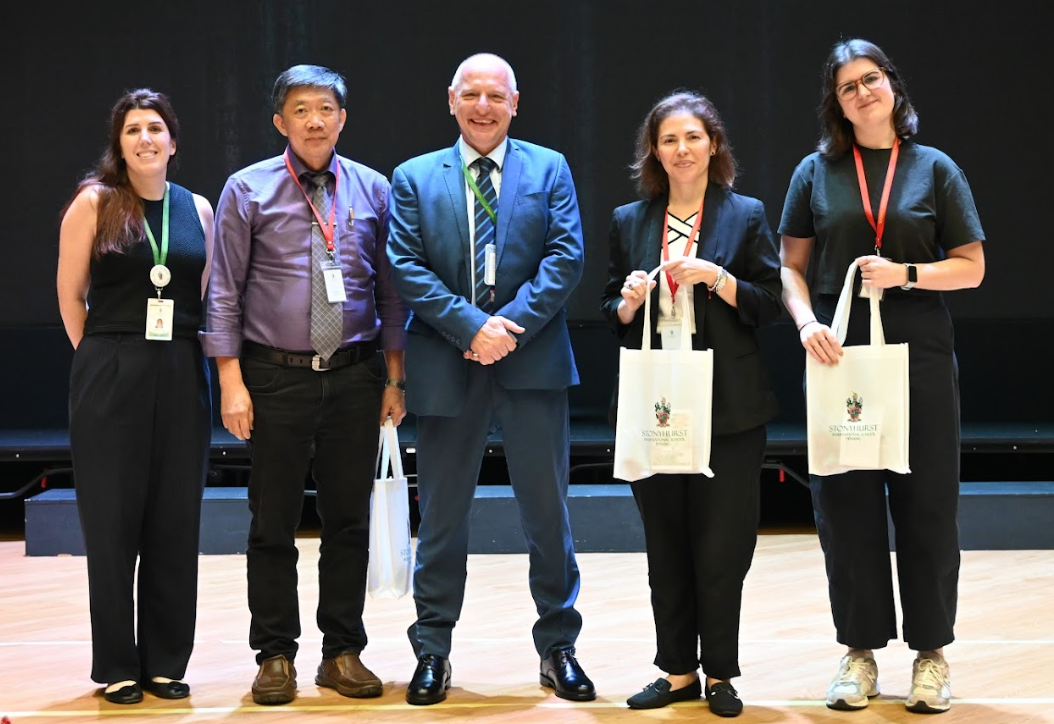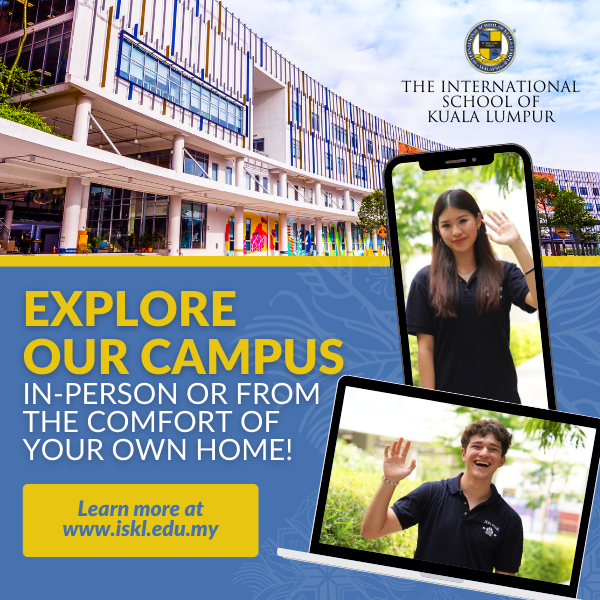As education continues to evolve, traditional classroom-based teaching methods are gradually being supplemented with more dynamic and experiential learning approaches. In Malaysia, outdoor learning is gaining recognition as a vital component of the education system. This approach not only enhances students’ engagement with what is taught but also fosters essential skills such as teamwork, critical thinking, and problem-solving. This article explores the development of outdoor learning in Malaysia; what international schools are doing to incorporate outdoor experiences for students; and future directions.
1. The Rise of Outdoor Learning in Malaysia
The growing emphasis on outdoor learning in Malaysia is driven by several key factors:
- Government Educational Policies: The Malaysian Ministry of Education encourages schools to adopt more interactive teaching methods, making outdoor learning a popular supplementary teaching approach. The government has also incorporated environmental education into primary and secondary school curricula, encouraging schools to combine classroom instruction with hands-on experiences to enhance students’ holistic development.
- Abundant Natural Resources: Malaysia is home to tropical rainforests, beaches, mountains, and national parks, providing an excellent environment for outdoor learning. These diverse geographical and ecological resources not only support science and biology education but also serve as practical learning sites for subjects such as art, geography, and history.
- Health and Psychological Development Needs: With rapid urbanization, children have fewer opportunities for outdoor activities, leading to issues such as obesity and reduced concentration. Schools have started implementing outdoor learning programs to encourage students to participate in outdoor activities with a view to improving their physical and mental health, enhancing their physical fitness, and cultivating endurance and perseverance.
- Environmental Awareness and Sustainability Education: The Malaysian government actively promotes sustainable education, using outdoor learning to increase students’ environmental awareness. For example, many schools collaborate with environmental organizations to conduct activities such as tree planting, beach clean-ups, and waste sorting, thus, helping students understand the importance of environmental protection through hands-on experiences.
2. Findings from the International Schools Survey on Outdoor Learning
The International Schools Survey, conducted from 11 September 2024 to 14 December 2024 by Education Destination Malaysia, gathered insights from educators, administrators and counsellors in 30 international schools. The results of the survey indicate that international schools in Malaysia actively incorporate field trips and outdoor experiences to enhance student engagement in learning beyond the classroom.
Many schools organize regular field trips to support academic and personal development. Kingsley International School conducts a Learning Journey every term, while Westlake International School offers an annual Learning Journey, Student Exchange Program, and the Duke of Edinburgh expedition. HELP International School provides diverse excursions, including Biology trips to Desa Farm, Geography expeditions to New Zealand, and sports competitions like the FOBISIA Games. Students also participate in programs, involving diving in Pulau Tioman and hiking Mount Kinabalu. These provide opportunities for the development of leadership and expertise in specific areas.
Several schools emphasize character-building and environmental education. Seven Skies International School mandates a Boot Camp under its Character Development Programme, and Oasis International School holds EAGLE Week, a service-learning programme where students engage in community projects across Malaysia and Asia. IDRISSI International School incorporates eco-awareness activities like river cleaning into its programme, while Spectrum International School aligns monthly excursions with thematic learning to deepen students’ understanding of real-world issues.
In addition to field trips, many schools offer summer and winter camps. Epsom College in Malaysia hosts Hakuba Ski Camps, British Summer School, and various enrichment programs. Seven Skies International School runs A-Game Summer Camp, focusing on IGCSE prep and STEAM activities. Oasis International School offers a three-week summer camp in June, catering to elementary and middle school students. Other than that, Soka International School Malaysia provides excursions for boarding students, including monthly grocery trips and additional term break activities to foster independence and social skills.
These survey findings indicate that international schools in Malaysia prioritize experiential learning through field trips, leadership boot camps, environmental projects, and seasonal camps. These initiatives provide hands-on education, foster personal growth, and create meaningful connections between classroom learning and real-world experiences.
3. Implementation of Outdoor Learning
Outdoor learning in Malaysia takes many forms. Some common practices include:
- Ecological Exploration: Students can visit places such as Taman Negara Kinabalu and Taman Negara National Park to study biodiversity and ecosystem dynamics. For example, during a wetland ecosystem study, students can analyze mangrove forest preservation and learn about endangered species protection.
- Agricultural Experience: Schools organize visits to paddy fields, oil palm plantations, or local farms, where students learn about agricultural production and Malaysia’s agricultural economy. Students gain hands-on experience in planting, harvesting and understanding Malaysia’s agricultural economy, helping them appreciate the significance of sustainable farming.
- Historical and Cultural Studies: Schools take students on educational trips to historical sites such as Malacca City, George Town in Penang, and Sarawak longhouses to deepen their understanding of Malaysia’s history and multicultural heritage. In Malacca, for example, students can visit the Dutch Square and St. Paul’s Church to learn about the influence of European colonial history on Malaysia.
- Sports and Outdoor Activities: Activities such as hiking, trekking, and excursions are simple yet effective ways to engage students in outdoor learning. These activities not only strengthen physical fitness and endurance but also provide opportunities to get out of the classroom, connect with nature, relieve stress, and improve overall well-being. For instance, organizing mountain hikes allows students to observe various plant species, insects, and birds along the way, helping them learn how to identify different flora and fauna and to understand how the ecosystem functions.
4. Challenges of Outdoor Learning and Strategies for Improvement
Despite the numerous benefits of outdoor learning, its implementation in Malaysia faces several challenges, including safety concerns, resource limitations, weather conditions, and curriculum integration difficulties. The following strategies help address these challenges:
- Developing a Detailed Safety Plan: Conduct a comprehensive risk assessment before undertaking outdoor activities to identify potential hazards, such as sudden heavy rain, intense sunlight, slippery terrain, and mosquito bites as well as other, common outdoor risks in Malaysia.Schools must also ensure that students are equipped with essential safety gear, including first-aid kits, sunscreen, insect repellent, raincoats, and drinking water, to provide basic protection in different environments. Additionally, both teachers and students should receive basic outdoor first-aid training on handling minor injuries, preventing and managing heatstroke, and responding to falls, sprains, injuries and other types of mishaps. To ensure prompt emergency responses, schools should implement a well-structured emergency contact system, clearly assigning responsible teachers and providing readily accessible emergency contact details for immediate assistance when needed.
- Allocating Resources for Outdoor Learning: Outdoor education requires financial support and necessary equipment, such as transportation, teaching tools, and professional guidance. Schools can apply for government funding or seek sponsorships from businesses, community groups, and non-governmental organizations (NGOs) to alleviate financial burdens on both institutions and parents. Additionally, schools should maximize the use of available local resources, such as national parks, museums and farms, as designated outdoor learning sites. Collaboration among schools to share outdoor facilities and teaching resources can further enhance opportunities for such education, allowing more students to participate in outdoor learning experiences.
- Enhancing Teacher Training: Since some educators lack experience in outdoor teaching, schools should provide systematic professional training to equip teachers with fundamental skills in outdoor education and emergency response management. Training programs should cover topics such as outdoor curriculum planning, safety management, and Malaysia’s natural and environmental education. Furthermore, schools can invite experienced outdoor education specialists, environmental organizations, or ecologists to provide hands-on training, to help teachers gain confidence and competence in leading outdoor learning activities effectively and efficiently in real-world settings.
In Malaysia, outdoor learning has become an important trend in modern education, gradually transforming traditional teaching approaches. It not only enhances students’ engagement with their learning but also fosters practical skills, teamwork, and innovative thinking. However, the implementation of outdoor learning continues to face various challenges. Addressing these challenges requires collaboration among educators, schools, and the broader community to optimize resource allocation, strengthen safety measures, and utilize modern technology to enhance the quality and effectiveness of outdoor education. Looking ahead, as educational philosophies and practices continue to evolve, outdoor learning is expected to be more widely available in Malaysia, providing students with diverse, authentic, and meaningful learning experiences that contribute in significant ways to the advancement of holistic education.
随着社会的发展和教育理念的进步,传统的课堂教学模式正逐渐被更加灵活和多样化的学习方式所取代。在马来西亚,户外学习正逐步成为教育体系的重要组成部分。户外学习不仅提高了学生对所学内容的参与度,还培养了团队合作、批判性思维和解决问题等关键技能。本文探讨了马来西亚户外学习的发展趋势、国际学校如何将户外体验融入学生学习,以及未来的发展方向。
1. 马来西亚户外学习的兴起
在马来西亚,户外学习的推广受到多个因素的推动:
- 国家教育政策的推动:马来西亚教育部鼓励学校采用更具互动性的教学方式,户外学习成为一种受欢迎的额外教学方法。政府还在中小学课程中增加了与环境教育相关的内容,并鼓励学校将课堂学习与实际体验结合,以提高学生的综合素质。
- 丰富的自然资源:马来西亚拥有热带雨林、海滩、山脉、国家公园等自然资源,为户外学习提供了优越的环境。这些丰富的地理和生态资源不仅适用于科学和生物学科的学习,也能用于艺术、地理和历史学科的实地教学。
- 健康与心理发展需求:由于城市化过程加快,孩子们的户外活动减少,导致肥胖率上升、专注力下降等问题。学校开始推行户外学习,鼓励学生多进行户外活动,以改善他们的身心健康,增强运动能力,并培养耐力与毅力。
- 环保教育的需求:马来西亚政府积极推动可持续发展教育,通过户外学习提高学生的环保意识。例如,许多学校与环保组织合作,开展植树、海滩清理和垃圾分类等活动,从而通过实践经验帮助学生理解环保的重要性。
2. 国际学校调查报告:户外学习调查结果
由 Education Destination Malaysia 于2024年9月11日至12月14日进行的国际学校调查,收集了来自30所国际学校的教育工作者、管理员和辅导员的意见。根据调查结果,马来西亚的国际学校积极融入实地考察和户外学习体验,以提高学生在课堂之外的学习参与度。
许多学校定期组织实地考察以促进学生的学术和个人成长。例如, Kingsley国际学校每学期都会开展学习之旅(Learning Journey), 而 Westlake国际学校则提供年度学习之旅、学生交换项目以及爱丁堡公爵奖探险活动。此外,HELP国际学校 组织多元化的考察活动,如生物学实地考察(Desa农场)、地理探险(新西兰)以及体育竞赛(FOBISIA运动会)。该校学生还可参与领导力培养项目,包括在刁曼岛(Pulau Tioman)进行潜水认证和登顶神山(Mount Kinabalu)的徒步旅行。这些活动为学生提供了培养领导力和在特定领域获得专业知识的机会。
部分学校特别注重品格塑造和环境教育。例如,Seven Skies国际学校在品格发展计划(Character Development Programme)下要求学生参加户外训练营(Boot Camp),而 Oasis国际学校举办 EAGLE Week,让学生在马来西亚及亚洲各地参与社区服务项目。此外,IDRISSI国际学校将生态意识教育融入考察活动,如河流清理行动,纳入其课程中,而Spectrum国际学校通过每月主题性考察加深学生对现实世界问题的理解。
除了实地考察,许多学校还提供夏令营和冬令营。例如,Epsom College Malaysia 组织白马滑雪营(Hakuba Ski Camps)、英国夏校(British Summer School)以及多种素质拓展项目。Seven Skies国际学校开办 A-Game夏令营,侧重 IGCSE备考 及 STEAM课程。Oasis国际学校提供三周制夏令营(六月),专为小学和中学学生设计。此外,Soka国际学校为寄宿生安排每月采购之旅及学期休假期间的额外户外活动,以培养学生的独立能力和社交技能。
调查结果表明,马来西亚国际学校高度重视体验式学习,通过实地考察、领导力训练营、环境保护项目和夏令营提供多元化的教育体验。这些举措不仅能增强学生的实践能力,还可促进个人成长,并在课堂知识与现实世界之间建立有意义的联系。
3. 户外学习方式
在马来西亚,户外学习的方式多种多样,以下是一些典型的实践方式:
- 生态考察:学生可以前往Taman Negara Kinabalu、Taman Negara等地,学习生物多样性、生态保护等知识。例如,在湿地生态系统考察中,学生可以研究红树林生态,并学习如何保护濒危物种。
- 农业体验:学校组织学生到稻田、油棕园或本地农场,学习农业生产过程,了解马来西亚的农业经济。例如,学生可以参与水稻种植的全过程,从插秧到收割,亲身体验农民的辛勤劳动,并学习农业科技在现代农耕中的应用。
- 历史与文化考察:学校可以带领学生参观马六甲古城、槟城乔治市、砂拉越长屋等历史文化遗址,加深对马来西亚历史和多元文化的理解。例如,在马六甲,学生可以参观荷兰红屋、圣保罗教堂等历史建筑,学习欧洲殖民时期对马来西亚的影响。
- 体育与户外运动:如爬山、徒步、郊游等,属于简单易行的户外活动,不仅能够锻炼学生的体能和毅力,也让他们有机会走出教室,亲近大自然,释放压力,提升身心健康。例如,组织山地徒步旅行让学生在途中观察到各种植物、昆虫和鸟类,帮助他们学习如何识别不同的动植物,并理解生态系统的运作方式。
4. 户外学习的挑战与应对策略
尽管户外学习带来诸多好处,但在马来西亚的实施过程中仍然面临一定挑战,包括安全问题、资源限制、天气因素以及课程设计难度等。以下策略有助于应对这些挑战
- 制定详细的安全预案:在进行户外学习前,学校应进行全面的风险评估,识别各种潜在危险因素,例如突如其来的暴雨、强烈阳光、湿滑地面、蚊虫叮咬等马来西亚常见的户外风险。同时,学校需配备齐全的安全装备,包括急救箱、防晒霜、防蚊液、雨具、饮用水等,确保学生在不同环境下都能得到基本保护。此外,教师与学生也应接受基础的户外急救知识培训,学习如何处理轻微伤害、预防和应对中暑、跌倒、扭伤及其他意外事故。为了确保紧急情况下及时处理,学校还需建立完善的应急联络机制,明确负责教师和紧急联络方式,以便在突发情况下快速获得支援。
- 安排户外教学资源 :户外学习需要一些经费和设备,比如交通、教学工具和专业指导。学校可以申请政府资助,或者争取企业、社区和非政府组织(NGO)的支持,减轻学校和家长的负担。同时,学校也可以充分利用身边的资源,如国家公园、博物馆、农场等,作为学生户外学习的场地。此外,学校之间的合作,共享户外设施和教学资源,可以进一步提升此类教育的可访问性机会,使更多学生能够参与户外学习体验。
- 加强教师培训:由于部分教师缺乏户外教学经验,学校应为教师提供系统的专业培训,帮助他们掌握户外教学的基本方法和应对突发状况的能力。培训内容应包括户外课程策划、安全管理、马来西亚自然与环境教育知识等。同时,学校可邀请具有丰富实地经验的户外教育专家、环境教育机构、生态学家等为教师提供实践指导,提升教师对户外教学的信心和掌控力,确保他们能够在真实环境中高效、有序地引导学生开展学习活动。
在马来西亚,户外学习作为现代教育的重要趋势,正在逐步改变传统的教学方式。这不仅增强了学生与学习的互动,还培养了实际技能、团队合作和创新思维。然而,户外学习在推广过程中仍面临诸多挑战,需要教育者、学校及社会各界共同协作,合理利用资源、强化安全保障,并利用现代科技手段,持续提升户外学习的质量与成效。展望未来,随着教育理念和实践的不断发展,户外学习预计将在马来西亚得到更广泛的应用,为学生提供多样化、真实且有意义的学习体验,同时为整体教育的发展做出重要贡献。
You may also be interested to read:


































